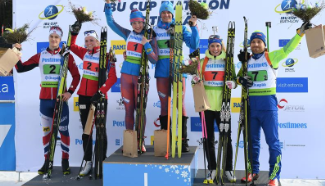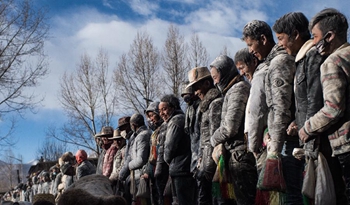SAN FRANCISCO, March 12 (Xinhua) -- A study indicates that photographs of food on plates might help improve health and also nutrition policy as dietary intake information is important both to individuals using nutrition-based therapy for conditions such as diabetes and heart disease, and to entire populations for identifying nutrition and disease risk.
Published in the journal Nutrients, the research at Oregon State University (OSU) tested the ability of 114 nutrition and dietetics students in the United States and Australia to identify foods and determine serving sizes by looking at photos of food on plates. They chose their food identification answers from entries in the U.S. Department of Agriculture's Food and Nutrient Database for Dietary Studies.
The students correctly identified the nine different foods nearly 80 percent of the time but struggled with serving size; only 38 percent of the estimates were within 10 percent of the actual weight of the food, with foods of amorphous shape or higher energy density, such as ice cream, proving the hardest to assess.
Therefore, the researchers noted that universities that educate the dietitians who review the photos need to provide more consistent, formal training, particularly hands-on work in food measurement and preparation and the use of computerized nutrient database systems, and a shortage of formalized, standardized training in these skills is problematic.
Image-based dietary assessment, or IBDA, aims to reduce or eliminate the inaccuracies that commonly accompany traditional methods such as written dietary records, 24-hour dietary recalls and food frequency questionnaires.
With the prevalence of smartphones, photography is emerging as a means of augmenting food-intake information gathering. A pre-diabetes patient, for example, could take a picture of everything he ate for three days, and a dietitian could then analyze those photos to make recommendations for dietary improvements.
"If you're providing me with your dietary intake information, you may not be trying to falsify the information, because you're sincerely interested in improving your diet," said the study's corresponding author, Mary Cluskey, an associate professor in OSU's College of Public Health and Human Sciences and a registered dietitian.
"But I'm depending on your ability to recall what you ate and your ability to correctly tell me what portions and specific ingredients you had - there are all kinds of things that can make it go wrong."
Students with a food preparation background that included cooking from recipes and frequently measuring portions performed better than those without that type of background, suggesting that future training of dietetics students should incorporate more of those types of experiences.
"We also need to work with people on their ability to take photos," Cluskey was quoted as saying in a news release from OSU.
"Shoot at a 45-degree angle to the food, preferably while you're standing, and make sure you have adequate light. We want to make it as easy as possible for people to provide information that's as accurate as possible," Cluskey said.












